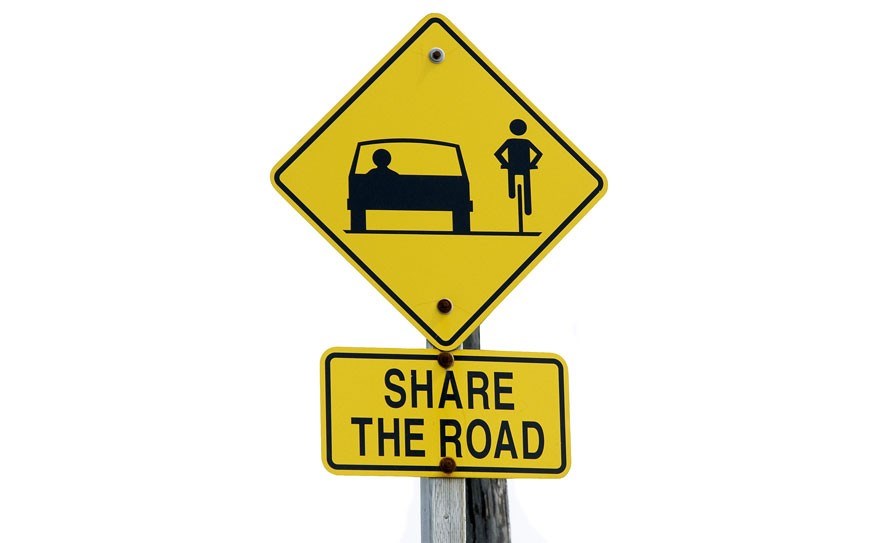There have been a lot of letters, discussions and concerns expressed recently about cycling and the use of Highway 99 and the Pemberton Meadows Road.
In Vancouver as well, cycling has become a topic of debate following two tragic, high-profile fatal accidents, on the Stanley Park causeway and during the Ride to Conquer Cancer. The accidents prompted a thoughtful editorial in the Vancouver Sun last week. (http://www.vancouversun.com/opinion/editorials/Editorial+time+start+talking+about+licensing+bikes/8562995/story.html)
Dialogue is not a bad thing, and it's never too late to begin a dialogue. The current discussions, it should be noted, have come about after multiple efforts to encourage cycling within Whistler, on Highway 99 and in Vancouver. Anecdotal evidence suggests these efforts have been successful, as there appear to be far more cyclists on the roads now than there were a few years ago.
This, again, is a positive thing. But, as with any change, it creates new dynamics.
Three-and-a-half years after the multi-million-dollar upgrade to Highway 99 the road is now used by more people than ever before and for a multitude of purposes: commuting, obviously, but also commerce and recreation. This mix of purposes would suggest that various users of the highway have different motivations, different foci for their attention while using the same piece of pavement.
Add to this mix the various speeds people are travelling at, depending on their mode of transportation, and the fact that traffic is travelling in opposite directions, often without barriers separating the traffic. Within Whistler there may even be two directions of traffic on the shoulders of the highway.
From this perspective, it's a complex mix of cars, trucks, bikes (and in Whistler, pedestrians and skateboarders) sharing a narrow corridor.
And now we have specific cycling events scheduled for the roads. The events themselves — Ironman Canada, RBC GranFondo Whistler, the Squamish Triathlon, Pemberton's Slow Food Cycle and even the Nimby Fifty mountain bike race — last a few hours on a single day. It appears to be the number of people training on the roads throughout the summer, in preparation for the events, that has caught people's attention.
But whether it's cyclists training or commuting, drivers commuting or doing business, pedestrians, skateboarders, farm vehicles, logging trucks or cowboys on horseback, it all really comes down to three words: share the road.
Implicit in those three words are respect for others who use the road. That means thinking about others on the road and the factors and limitations they may be operating under.
The Sea to Sky Road Cycling Collaborative, which includes the local governments in the corridor and the Ministry of Transportation, has launched an awareness campaign to remind drivers and cyclists of their responsibilities and rights on the road. It's a timely reminder for all road users as summer traffic in its various forms increases with the Canada Day long weekend.
Raising the level of awareness — and respect — for others on the road is a challenge, particularly in a corridor where many of the cyclists and drivers are visitors. A number of the signs and markings reminding people that the road is to be shared have disappeared or become illegible since the highway improvements were completed. The skid marks at each stoplight on Highway 99 in Whistler suggest that some drivers aren't paying as much attention as they should. And cyclists riding against the traffic on the shoulders are accidents waiting to happen.
Among the things that could help with education and mutual understanding is better maintenance of road markings. The fog line, the white line marking the shoulder, is non-existent in many sections of the highway, particularly within Whistler.
The highway through Whistler was widened prior to the Olympics to allow three lanes of traffic during the Games. Following the Olympics the road width was maintained and the extra space was marked off for wider-than-normal shoulders, designed to encourage cycling as a means of transportation. The bicycle symbols that were once visible on the shoulders made this clear.
The shoulders have become well used, not just by cyclists but by pedestrians, skateboarders and occasionally dogs and bears. However, the fog line gets worn away by snowplowing every winter. On many right-hand corners there is no evidence of the fog line and vehicles drift onto the shoulder. It's become so confusing in some areas we've even seen vehicles driving side by side in the same direction.
But even if there were no lines, signs or other markings on the highway we should all be able to use the road safely for our own interests. It comes down to respecting others' rights to do the same.




